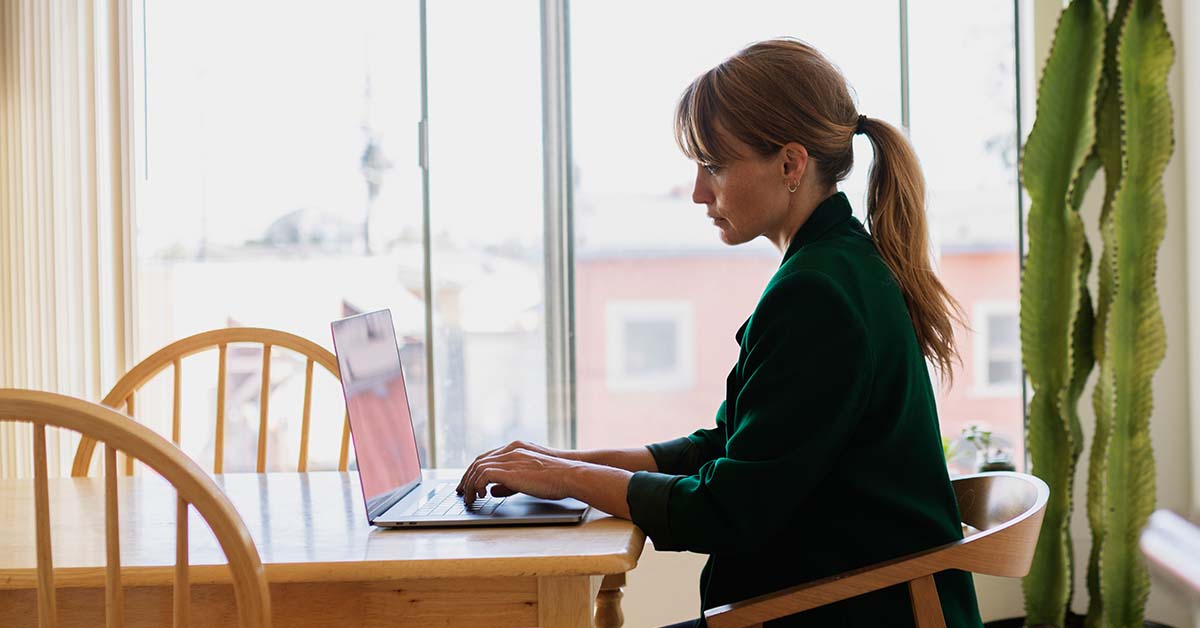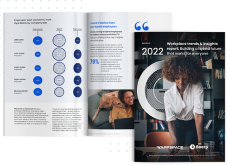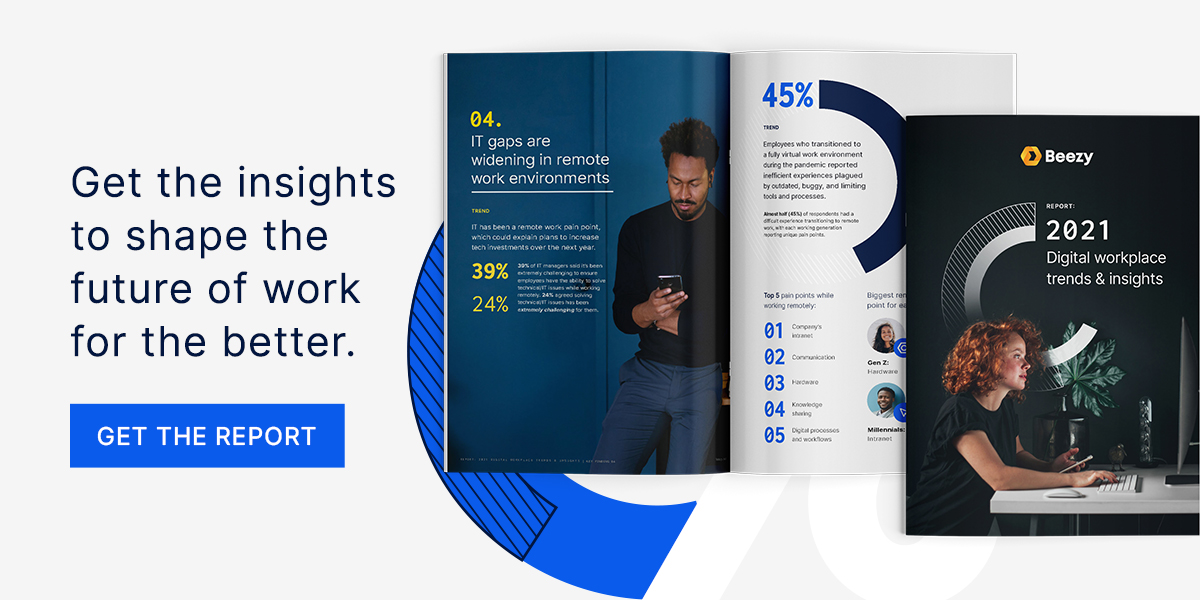
Meeting fatigue is the new app fatigue – but the fix can be simple
Beezy
May 19, 202154% of us are attending more virtual meetings now than face-to-face ones pre-pandemic. Over a third of us find these extra meetings unproductive and unnecessary.
If you’ve ever felt a nagging dread when you see yet another virtual meeting in your calendar, you’re not alone. Our recent research report details just how employees are feeling about the workplace after a year of lockdown. For instance, 41% percent said they’re now attending between four and seven additional meetings a week. And the kicker is that the vast majority feel these meetings are stopping them from getting things done.
The data tells us a lot about how employees feel about the workplace today. It sets out what changes can be made to ensure you’re keeping the brightest and the best staff, and business at its most productive.
Get your copy of the Beezy report: 2021 Digital workplace trends & insights
Today, employees are feeling the stress of a work day that’s become dominated by video calls. Not only that, but excessive meetings are extending their working day. 54% say they’re working more hours remotely than they were in the office before the pandemic. It doesn’t take a genius to see that this can signal burnout.
Virtual meetings can increase fatigue
The issue isn’t just the frequency of online meetings. Research states that employees find them more tiring than in-person meetings. Stanford researchers, in a report published in the journal Technology, Mind and Behavior, came to the conclusion that “excessive amounts of close-up eye gaze, cognitive load, increased self-evaluation from staring at video of oneself, and constraints on physical mobility” all contribute to increased meeting fatigue.
Our report also revealed that a massive 85% of employees believe they’d be able to successfully complete their jobs with fewer virtual meetings or calls. Take a minute to process that stat. Eighty-five percent feel that meetings are getting in the way of their productivity.
We need to work smarter, to find ways to collaborate and work together that don’t have us sitting in unproductive, back-to-back meetings. We need to look beyond the meeting, to use better, integrated collaboration tools that give teams the flexibility to work together in ways that are more efficient and give them more agency to produce their best work.
Employees are looking for workplace flexibility
Reviewing systems and practices to create a truly effective hybrid workplace represents an opportunity to give all employees the same tools and engagement whether they’re working from home, in the office, or in the field. This ensures a workplace that is built around people who feel that they can be at their most productive.
We know from our report that employees are looking for more flexibility at work. A year in lockdown has given many the opportunity to re-evaluate their lives. If our organizations are to keep pace with the competition, we must make sure that the digital employee experience has their needs front and center.
Here are our top tips to combat meeting fatigue
1. There's a place for meetings, but give them space to breathe: Make time for breaks in between so that people can move around, take their eyes off the screen.
2. Keep virtual meetings to 30 minutes: This will help to reduce the issue of fatigue and keep the meeting focused.
3. Reduce on-screen stimuli: In in-person meetings, we tend to focus on one person at a time. Virtual meetings show us a sea of heads and interesting backgrounds (Ooh, a cat!) Ask attendees to choose plain backgrounds and give them the option to have their camera on or off. Also consider using calls instead of video meetings.
4. Talk to your teams regularly: Set up surveys and feedback loops to take the temperature of the organization. This will help you to spot signs of fatigue and stress.
5. Consider having company-wide no-meeting days once a week: Make sure those at the top take the lead and promote this as part of the company culture.
6. Set up collaborative spaces that work asynchronously: Collaborative spaces that teams can check into in their own time work well with more flexible schedules. They’re not only more inclusive but will get the best out of those who don’t necessarily shine in face-to-face meetings.
7. Introduce immersive communication and collaboration tools: Multiple apps and information in disparate places can overwhelm users. Invest in tools that work in tandem and integrate with the tools you’re already using. If you’re like most organizations, you’ve invested in Microsoft 365 so you’ll want to get the most from the Microsoft platform. Beezy brings these tools together in a way that’s intuitive and seamless.
Concentrate on human connection
As we look forward (at long last) to a post-pandemic future, and take stock of the past year, we’ve learned that while technology is enabling the shift to hybrid and flexible working, it can also be a big pain point if it’s patched on to outdated systems or doesn’t take into account the nuances and processes at play within a workplace.
It’s not surprising that employees are starting to re-evaluate their work life. We believe we’re already seeing a shift in employee focus, with wellbeing and flexibility a priority.
As Beezy’s CEO, Jordi Plana, said in his recent blog article: “We can have intelligent technology do the heavy lifting for us so we can concentrate on human connection, innovation, creativity, collaboration.”
Find out more about how you can better understand your employees and create an intelligent digital workplace that fits your organization.



